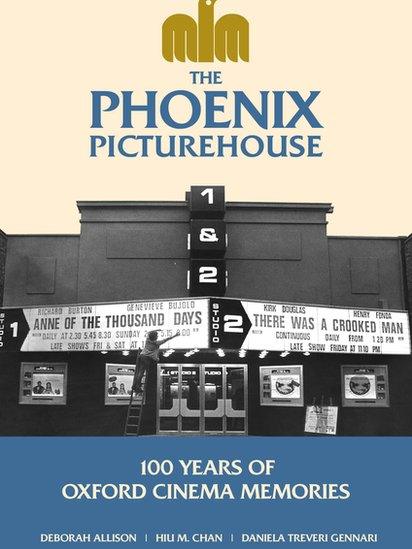In pictures: 100 Years of the Phoenix Picture House
- Published

The Phoenix Picture House in Jericho, Oxford, is one of only a handful of cinemas in the UK to have remained open for 100 years.

As part of the Phoenix Centenary Project, all 20,000 films shown at the cinema have been catalogued. Screenings in the opening month of the then North Oxford Kinema included The Three Musketeers, The Diary of a Duckling, and Brothers by D.W. Griffith.
.jpg)
In the 1920s the newly named Scala aimed to attract an upmarket clientele by introducing telephone bookings, but by 1926 (pictured) it was appealing to the less affluent with free tea and coffee. A decade later it was carving itself a new niche by showing foreign language films to undergraduates.
.jpg)
Deborah Allison, Phoenix programmer, said: "There has been gentrification to the area. It was a bit grotty, but that’s not been the main determinant of what films were shown. Oxford always had a diverse population, with the town and gown, and differences of class, wealth and education. These groups always coexisted."
.jpg)
The cinema has changed hands six times over the century. In the 1970s its new owners renamed it Studio 1 & Studio 2.
.jpg)
The 1990s were a "golden era" of Q and A screenings. Ian McKellen (pictured at a showing of Gods and Monsters), Pete Postlethwaite and directors Mike Newell, Robert Altman, Stephen Daldry and Richard Curtis all came to the cinema to talk about their work.
.jpg)
In 1994 the Phoenix Picture House converted some empty roof space to create a bar. It has been taken over during charity events, such as a Star Wars screening in aid of the Make A Wish Foundation.
.jpg)
The cinema has since diversified into live satellite showings of performances from the National Theatre and the Met Opera in New York. But screenings of the classics, from Bergman to Kurosawa, remain popular with audiences.

A new publication released by the cinema includes unreleased photographs from its 100-year history. Ms Allison added: "The key to it lasting is that it has continuously reinvented itself. Rather than doing the same thing we have always been listening to what the customers want."